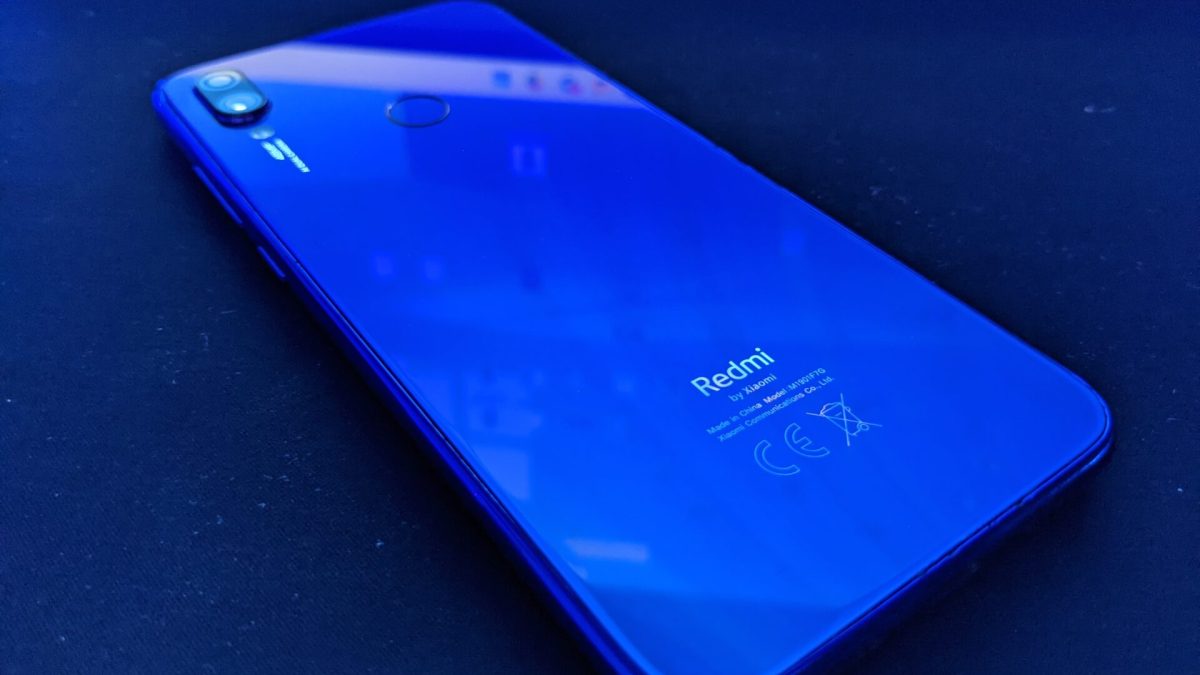Introduction
Rooting a Redmi Note 8 can unlock a world of possibilities, allowing you to customize your device, access advanced features, and optimize its performance. This comprehensive guide will walk you through the process of rooting your Redmi Note 8, providing valuable insights into the benefits, risks, and essential preparations required for a successful rooting experience. Whether you're a tech enthusiast seeking to harness the full potential of your device or a curious user looking to explore new horizons, this guide will equip you with the knowledge and tools needed to embark on this exciting journey.
By delving into the intricacies of rooting, you'll gain a deeper understanding of the inner workings of your Redmi Note 8, empowering you to take control of its software and unleash its true capabilities. Throughout this guide, you'll discover the advantages of rooting, the potential risks involved, and the step-by-step process to safely and effectively root your device. With this knowledge at your fingertips, you'll be ready to embark on a transformative experience that can elevate your mobile device usage to new heights.
As you embark on this journey, it's important to approach rooting with a sense of curiosity and a willingness to learn. While the process may seem daunting at first, the rewards of a rooted Redmi Note 8 are well worth the effort. From customizing the user interface to optimizing system performance and exploring a vast array of third-party apps, rooting opens up a world of possibilities that can enhance your overall mobile experience.
So, fasten your seatbelt and get ready to dive into the exciting realm of rooting your Redmi Note 8. With the right knowledge and guidance, you'll be well-equipped to navigate this transformative process and unlock the full potential of your device. Let's embark on this journey together and discover the endless possibilities that await as we delve into the world of rooting.
What is Rooting?
Rooting is the process of gaining privileged control over a mobile device's operating system, allowing users to access and modify system files and settings that are typically restricted. In essence, it grants users elevated administrative privileges, akin to the concept of "root" in the Linux operating system, from which the term "rooting" originates.
By rooting your Redmi Note 8, you effectively remove the limitations imposed by the manufacturer and gain the ability to customize and optimize your device in ways that were previously inaccessible. This includes the ability to install custom ROMs, which are modified versions of the device's operating system, offering enhanced features, performance optimizations, and a personalized user experience.
One of the primary motivations for rooting a Redmi Note 8 is the freedom it provides to uninstall pre-installed bloatware, streamline system processes, and improve overall device performance. Additionally, rooting enables users to access and utilize powerful root-only apps that leverage advanced functionalities, further enhancing the device's capabilities.
Furthermore, rooting facilitates the customization of the device's appearance and behavior, allowing users to personalize the user interface, install custom themes, and implement system-wide modifications to create a truly unique and tailored user experience.
It's important to note that rooting is not without its risks, as it can potentially void the device's warranty and expose it to security vulnerabilities if not done carefully. However, when approached with caution and a thorough understanding of the process, rooting can unlock a wealth of benefits that can significantly enhance the functionality and versatility of your Redmi Note 8.
In summary, rooting your Redmi Note 8 empowers you to take control of your device, customize its software, and explore a multitude of advanced features and optimizations that are otherwise inaccessible. It's a gateway to a world of possibilities, offering a deeper level of personalization and control over your mobile experience.
Benefits of Rooting Redmi Note 8
Rooting your Redmi Note 8 unlocks a myriad of compelling benefits that can elevate your mobile experience to new heights. By gaining administrative control over the device's operating system, you open the door to a wealth of customization options, advanced features, and performance optimizations. Here are the key benefits of rooting your Redmi Note 8:
-
Customization: Rooting allows you to customize every aspect of your device, from the user interface to system behaviors. You can install custom ROMs, which offer a wide range of customization options, including personalized themes, icons, and system-wide modifications. This level of customization enables you to tailor your device to reflect your unique preferences and style.
-
Performance Optimization: With root access, you can optimize your Redmi Note 8's performance by removing bloatware, streamlining system processes, and implementing performance-enhancing tweaks. This can result in improved speed, responsiveness, and overall system efficiency, providing a smoother and more responsive user experience.
-
Access to Root-Only Apps: Rooting grants you access to a variety of powerful root-only apps that leverage advanced functionalities. These apps can enhance your device's capabilities, offering features such as deep system integration, advanced backup and restore options, and comprehensive system management tools that are not available to unrooted devices.
-
Enhanced Battery Life: Rooting your Redmi Note 8 opens the door to advanced battery-saving apps and system tweaks that can extend battery life. By optimizing system processes and managing power consumption more effectively, you can maximize the device's battery performance, ensuring longer usage between charges.
-
Ad-Blocking and Network Control: Rooting enables you to block ads system-wide and exercise greater control over network settings. This includes the ability to block intrusive ads in apps and browsers, as well as fine-tune network parameters to optimize data usage and network connectivity.
-
Backup and Restore Flexibility: Root access allows for more comprehensive backup and restore options, enabling you to safeguard your data and system settings more effectively. You can utilize advanced backup solutions that offer greater flexibility and customization, ensuring that your data remains secure and easily recoverable.
-
Exploration of Advanced Features: Rooting your Redmi Note 8 provides the opportunity to explore and experiment with advanced features and system-level optimizations that are not accessible on unrooted devices. This includes the ability to tweak system settings, implement performance-enhancing modifications, and delve into the inner workings of the device's operating system.
In summary, rooting your Redmi Note 8 empowers you to unleash the full potential of your device, offering unparalleled customization, performance enhancements, and access to advanced features and optimizations. It's a gateway to a more personalized, efficient, and versatile mobile experience that caters to your individual preferences and usage patterns.
Risks of Rooting Redmi Note 8
While the benefits of rooting a Redmi Note 8 are compelling, it's essential to acknowledge the potential risks and implications associated with this process. Understanding these risks is crucial for making an informed decision and approaching rooting with a sense of caution and preparedness. Here are the key risks to consider when rooting your Redmi Note 8:
-
Voiding Warranty: Rooting your Redmi Note 8 may void the device's warranty, as it involves modifying the original software and system settings. This means that if any hardware or software issues arise after rooting, the manufacturer or service provider may refuse to provide support or warranty coverage. It's important to weigh the potential loss of warranty against the benefits of rooting and consider the long-term implications for device maintenance and support.
-
Security Vulnerabilities: Rooting exposes the device to potential security vulnerabilities, as it grants elevated privileges that can be exploited by malicious software or unauthorized users. By bypassing built-in security measures, such as the Android security model, the device becomes more susceptible to malware, unauthorized access, and other security threats. It's crucial to exercise caution when installing third-party apps and custom ROMs, as they may introduce security risks that could compromise the integrity of the device and personal data.
-
Software Instability: Rooting can lead to software instability and compatibility issues, particularly when installing custom ROMs or system modifications. While customizing the device's software can offer enhanced features and performance optimizations, it also introduces the potential for system crashes, application conflicts, and unpredictable behavior. This can result in a less reliable and consistent user experience, requiring additional troubleshooting and maintenance to address software-related issues.
-
Risk of Bricking: The process of rooting, particularly when flashing custom ROMs or modifying system files, carries the risk of "bricking" the device. Bricking refers to rendering the device inoperable, akin to turning it into a "brick," due to a critical error or malfunction during the rooting process. While the likelihood of bricking a device can be minimized by following proper rooting procedures, the risk remains, and it's essential to proceed with caution and thorough research.
-
Loss of Over-the-Air Updates: Rooting may result in the loss of over-the-air (OTA) updates from the device manufacturer or carrier. Since rooted devices often deviate from the official software configuration, they may no longer receive official system updates, security patches, or feature enhancements. This can lead to a stagnant software environment, potentially missing out on critical updates and improvements released by the device manufacturer.
In summary, while rooting a Redmi Note 8 offers a wealth of benefits, it's important to consider the associated risks, including warranty implications, security vulnerabilities, software instability, the risk of bricking, and the loss of OTA updates. By understanding these risks and taking necessary precautions, users can make informed decisions regarding the rooting process and mitigate potential challenges that may arise.
Preparing Your Redmi Note 8 for Rooting
Before embarking on the rooting process for your Redmi Note 8, it's crucial to undertake thorough preparations to ensure a smooth and successful experience. Proper preparation minimizes the risks associated with rooting and sets the stage for a seamless transition to a rooted device. Here are the essential steps to prepare your Redmi Note 8 for rooting:
-
Backup Your Data: Begin by backing up all important data on your Redmi Note 8, including photos, videos, contacts, and any other personal files. This ensures that your data remains safe in the event of any unforeseen issues during the rooting process. You can utilize the device's built-in backup features or third-party backup solutions to safeguard your data.
-
Unlock Bootloader: In order to root your Redmi Note 8, you'll need to unlock the device's bootloader. This process involves obtaining an unlock code from Xiaomi's official website and using it to unlock the bootloader. It's important to note that unlocking the bootloader may erase all data on the device, so ensure that you've backed up your data beforehand.
-
Enable Developer Options: Access the device's settings and enable Developer Options by tapping the build number in the About Phone section multiple times. Once Developer Options are enabled, you can access advanced settings that are essential for the rooting process.
-
Enable USB Debugging: Within the Developer Options, enable USB debugging, which allows the device to communicate with a computer via USB while performing advanced operations such as rooting. This setting is crucial for establishing a connection between the device and the rooting tools.
-
Ensure Sufficient Battery Level: Before initiating the rooting process, ensure that your Redmi Note 8 has an adequate battery level. It's recommended to have the device charged to at least 50% to prevent any interruptions during the rooting process.
-
Research and Gather Resources: Take the time to research the specific rooting method and tools suitable for the Redmi Note 8. Identify reputable sources for rooting guides, custom ROMs, and rooting tools that are compatible with your device model and software version.
By diligently preparing your Redmi Note 8 for rooting, you lay a solid foundation for a successful and rewarding rooting experience. These preparatory steps not only minimize the potential risks associated with rooting but also equip you with the knowledge and resources needed to navigate the process with confidence and precision. With your device primed and ready, you're poised to embark on the transformative journey of rooting your Redmi Note 8 and unlocking its full potential.
How to Root Redmi Note 8
Rooting your Redmi Note 8 involves a series of carefully executed steps to ensure a successful and seamless transition to a rooted device. It's essential to approach the rooting process with caution, following precise instructions and utilizing reputable tools to minimize the associated risks. Here's a comprehensive guide on how to root your Redmi Note 8:
-
Research and Identify Rooting Method: Begin by researching and identifying a reliable rooting method that is compatible with your Redmi Note 8 model and software version. Look for reputable sources and community forums that provide detailed guides and resources for rooting Xiaomi devices.
-
Download Necessary Tools: Once you've identified the appropriate rooting method, download the necessary tools and resources required for the rooting process. This may include rooting software, custom recovery tools, and any specific files or packages essential for the chosen rooting method.
-
Unlock Bootloader: If you haven't already unlocked the bootloader of your Redmi Note 8, follow the official procedure provided by Xiaomi to obtain an unlock code and unlock the device's bootloader. This step is crucial for initiating the rooting process and gaining administrative access to the device's system.
-
Install Custom Recovery: After unlocking the bootloader, install a custom recovery tool such as TWRP (Team Win Recovery Project) on your Redmi Note 8. Custom recovery allows for advanced system modifications and is essential for flashing the necessary files to root the device.
-
Backup Data: Before proceeding with the rooting process, ensure that you have backed up all important data on your Redmi Note 8. This includes personal files, contacts, and any other data that you want to safeguard in case of unforeseen issues during rooting.
-
Transfer Rooting Files: Transfer the rooting files, including the root package and any additional files required for the chosen rooting method, to your Redmi Note 8. Ensure that the files are accessible from the device's internal storage or external SD card.
-
Boot into Custom Recovery: Power off your Redmi Note 8 and boot into custom recovery mode by pressing the designated hardware key combination. Once in custom recovery, navigate to the location where the rooting files are stored and proceed with flashing the root package.
-
Flash Root Package: In custom recovery, flash the root package onto your Redmi Note 8. This process may vary depending on the specific rooting method and the instructions provided by the rooting tool or guide you are following.
-
Reboot Device: After flashing the root package, reboot your Redmi Note 8. Upon reboot, the device should now be rooted, granting you administrative access and the ability to utilize root privileges for advanced customizations and optimizations.
-
Verify Root Access: To confirm that your Redmi Note 8 has been successfully rooted, you can use root checker apps available on the Google Play Store. These apps verify the presence of root access on the device, providing assurance that the rooting process was completed successfully.
By meticulously following these steps and exercising caution throughout the process, you can effectively root your Redmi Note 8 and unlock its full potential. It's important to refer to reputable sources and community forums for detailed guidance specific to your device model and software version, ensuring a smooth and rewarding rooting experience.
Conclusion
In conclusion, the process of rooting a Redmi Note 8 represents a transformative journey that empowers users to unlock the full potential of their device. By gaining administrative control over the operating system, users can delve into a realm of customization, performance enhancements, and advanced features that elevate the mobile experience to new heights. Throughout this guide, we've explored the intricacies of rooting, delving into the benefits, risks, and essential preparations required for a successful rooting experience.
Rooting offers a plethora of benefits, including unparalleled customization, performance optimization, access to root-only apps, enhanced battery life, ad-blocking capabilities, and the exploration of advanced features. These advantages cater to users seeking a more personalized, efficient, and versatile mobile experience, allowing them to tailor their devices to reflect their unique preferences and usage patterns.
However, it's crucial to acknowledge the potential risks associated with rooting, such as voiding the device's warranty, exposing it to security vulnerabilities, encountering software instability, the risk of bricking, and the loss of over-the-air updates. Understanding these risks is essential for making informed decisions and approaching the rooting process with a sense of caution and preparedness.
Properly preparing a Redmi Note 8 for rooting involves backing up data, unlocking the bootloader, enabling developer options and USB debugging, ensuring sufficient battery level, and researching and gathering necessary resources. These preparatory steps lay the groundwork for a smooth and successful rooting experience, minimizing potential risks and equipping users with the knowledge and resources needed to navigate the process with confidence.
The step-by-step process of rooting a Redmi Note 8 involves meticulous research, identifying the appropriate rooting method, downloading necessary tools, unlocking the bootloader, installing custom recovery, backing up data, transferring rooting files, booting into custom recovery, flashing the root package, rebooting the device, and verifying root access. By following these steps with precision and caution, users can effectively root their Redmi Note 8 and harness the full capabilities of their devices.
In essence, rooting a Redmi Note 8 is a journey of exploration, empowerment, and personalization. It opens the door to a world of possibilities, enabling users to tailor their devices to suit their individual preferences, optimize performance, and access advanced features that enhance the overall mobile experience. With the right knowledge, preparation, and approach, rooting can be a rewarding endeavor that unlocks the true potential of the Redmi Note 8, transforming it into a personalized and powerful tool that caters to the unique needs and preferences of its users.

























